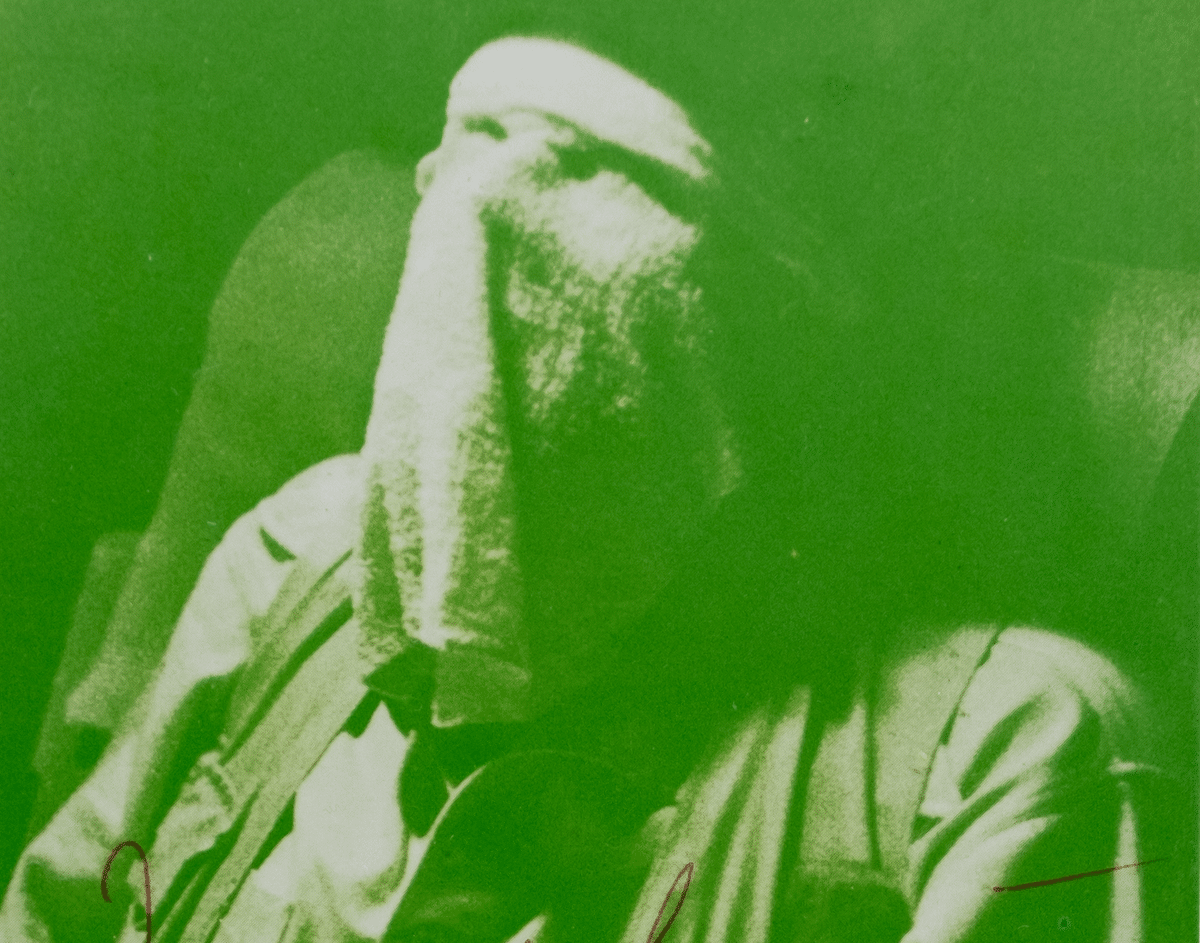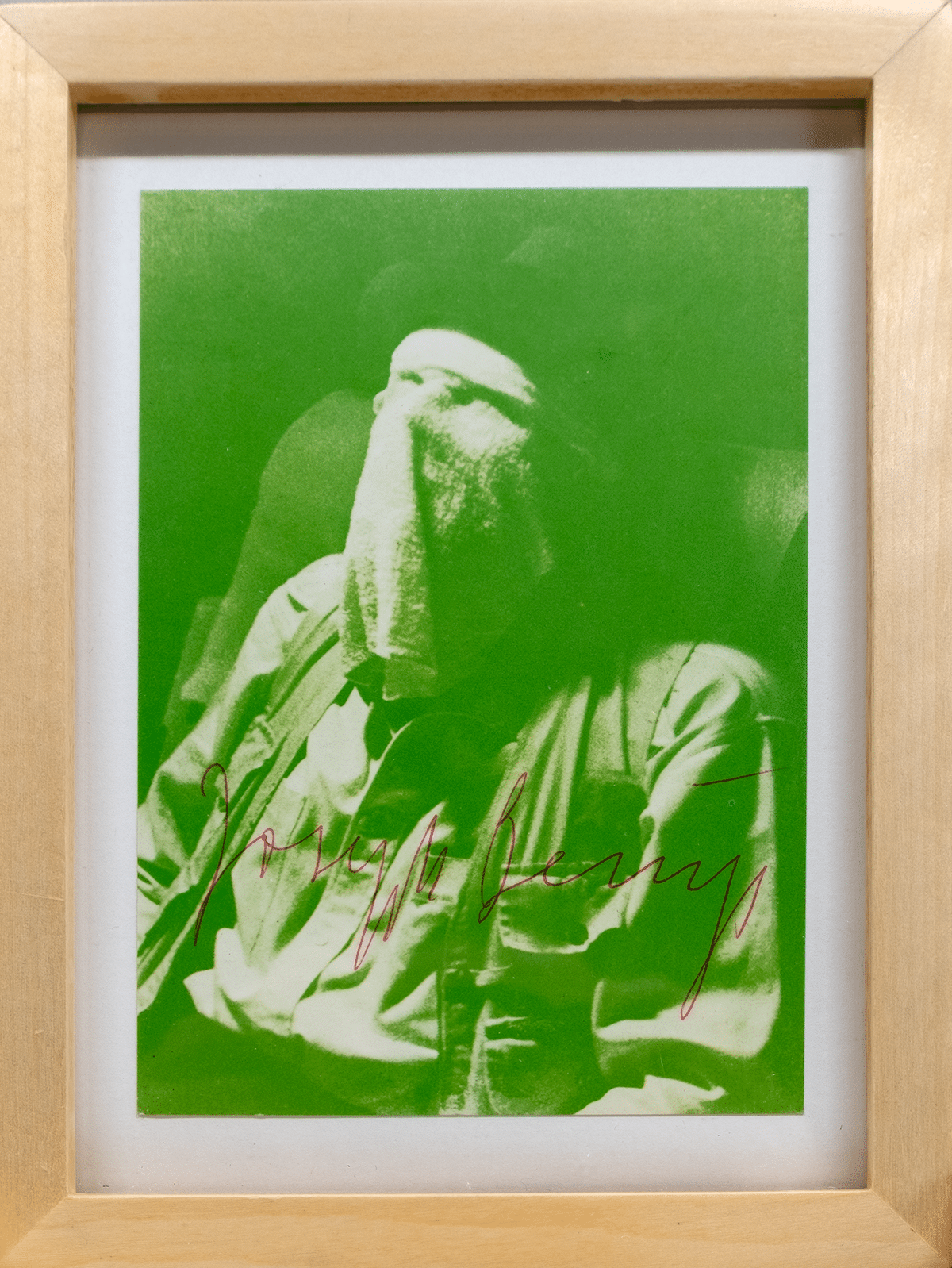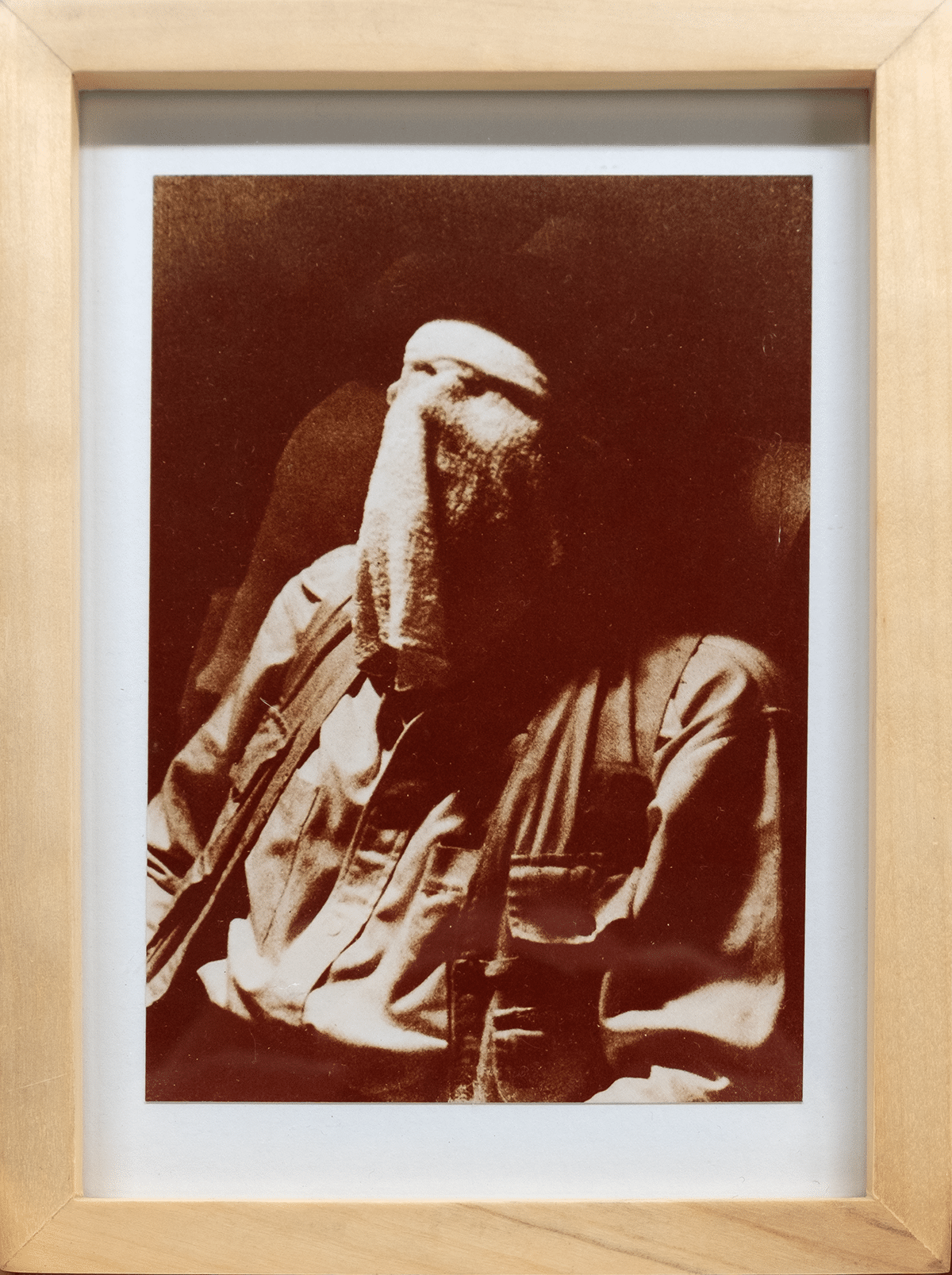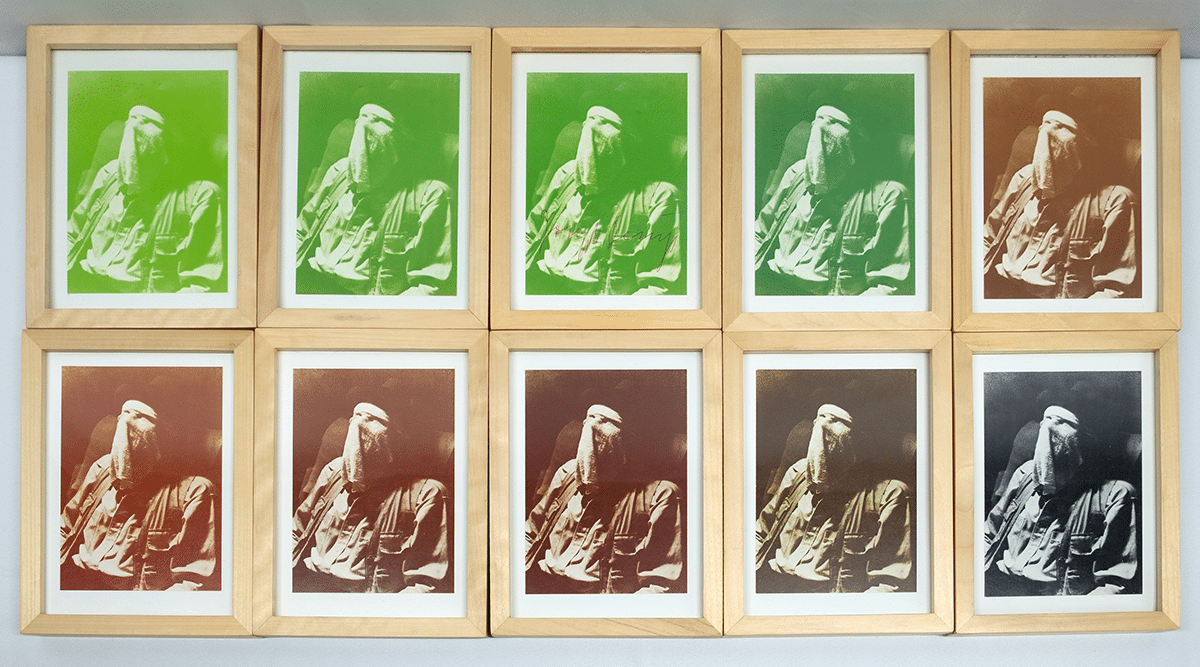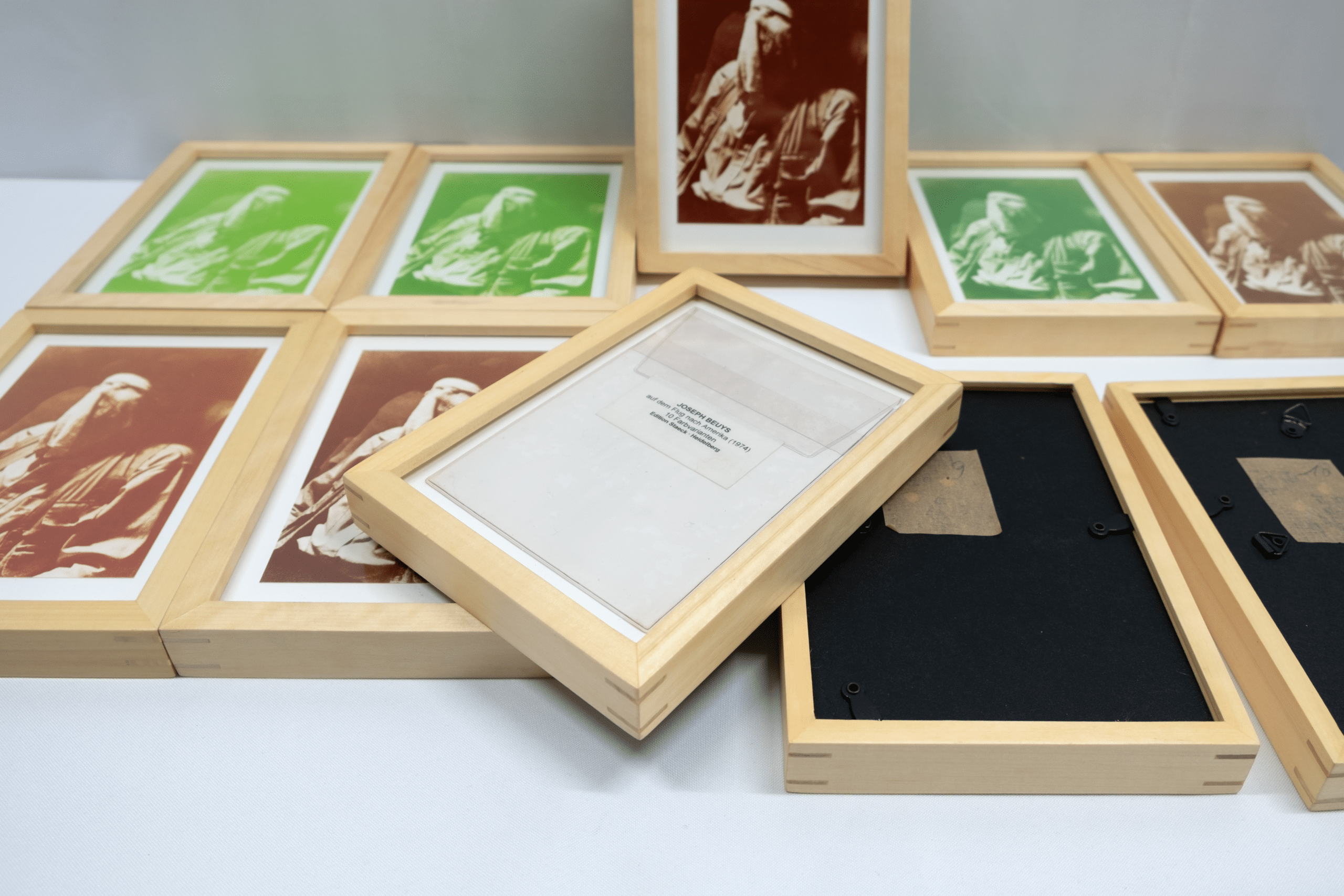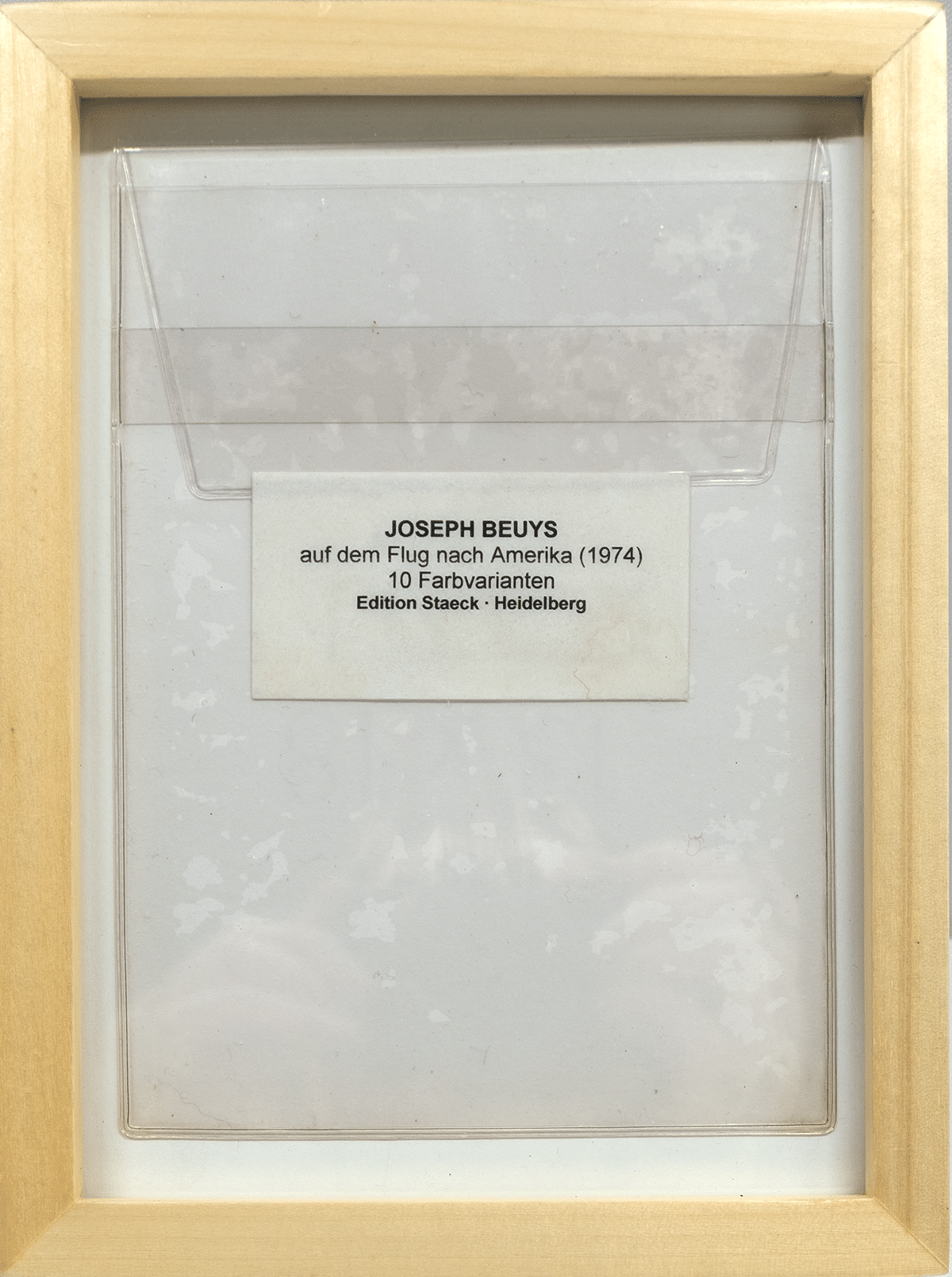Joseph Beuys (1921-1986) - Auf dem Flug nach Amerika
In the 1974 action I like America and America likes Me, he spent three days with a coyote, revered as sacred by native North Americans, at René Block's New York gallery. Beuys involved the animal in his action because he saw in it the former spiritual energy of Native Americans, as well as their expulsion. Beuys said, "Warum arbeite ich mit Tieren, um unsichtbare Kräfte auszudrücken? - Man kann diese Energien sehr deutlich machen, wenn man ein anderes, längst vergesseneses Reich betritt, in dem unermeßliche Kräfte als große Persönlichkeiten überleben. Und wenn ich versuche, mit den spirituellen Wesen dieser Gesamtheit von Tieren zu sprechen, wirft das die Frage auf, ob man nicht auch mit den höheren Wesen, diesen Gottheiten und Elementargeistern sprechen kann [...] Der Geist des Kojoten ist so mächtig, dass ihn kein Mensch versteht oder was er für die Zukunft der Menschheit bedeuten kann. [...] Ich glaube, ich hatte Kontakt mit dem psychologisch wunden Punkt in der Energieverteilung der USA: Das ganze amerikanische Trauma mit den Indianern, dem 'Roten Mann'. Man könnte sagen, dass noch eine Rechnung mit dem Kojoten zu begleichen ist, erst dann kann dieses Trauma aufgehoben werden." I like America and America likes Me began in Düsseldorf with Beuys' departure for New York and ended with his return to Düsseldorf. Upon arrival at John F. Kennedy Airport, Beuys had himself completely wrapped in felt because, as he himself said, he "did not want to see anything of America and wanted to isolate himself from the outside world. " He was then taken by ambulance to the gallery , where he planned to spend several days in a room in the gallery with a coyote named "Little John." During the action, Beuys played with the coyote dressed as a shepherd with a shepherd's staff and a felt cape, had the animal take off its coat and stacked copies of the Wall Street Journal newspaper during the action. The coyote preferred to seek a spot on the newspapers and occasionally urinated on them. All that remained for Beuys were the straw, strips of felt, the shepherd's crook and a triangle, which he occasionally used. The coyote, who at first was aggressive and afraid, gained more and more confidence in him during the operation, creating a relationship between man and animal. By way of farewell, Beuys hugged the prairie wolf and scattered the straw on which the two shared their bed around the room. The artist was then re-wrapped in felt and taken back to the airport in an ambulance, having never seen America except for the coyote, the copies of the Wall Street Journal and the gallery space. Beuys later said he wanted to see nothing but this coyote, because this animal, hated by whites, could also be seen as an angel.
Information from:
https://de.wikipedia.org/wiki/I_like_America_and_America_likes_Me
10 framed photographs. 1974. One photograph signed. Photolithography printed in various colors of ink on paper. Published by Edition Staeck, Heidelberg (the original folder is in one of the frames). Dimensions 10.4*14.7 cm. Frames approx 15*20 cm.
Back to offer overview
In the 1974 action I like America and America likes Me, he spent three days with a coyote, revered as sacred by native North Americans, at René Block's New York gallery. Beuys involved the animal in his action because he saw in it the former spiritual energy of Native Americans, as well as their expulsion. Beuys said, "Warum arbeite ich mit Tieren, um unsichtbare Kräfte auszudrücken? - Man kann diese Energien sehr deutlich machen, wenn man ein anderes, längst vergesseneses Reich betritt, in dem unermeßliche Kräfte als große Persönlichkeiten überleben. Und wenn ich versuche, mit den spirituellen Wesen dieser Gesamtheit von Tieren zu sprechen, wirft das die Frage auf, ob man nicht auch mit den höheren Wesen, diesen Gottheiten und Elementargeistern sprechen kann [...] Der Geist des Kojoten ist so mächtig, dass ihn kein Mensch versteht oder was er für die Zukunft der Menschheit bedeuten kann. [...] Ich glaube, ich hatte Kontakt mit dem psychologisch wunden Punkt in der Energieverteilung der USA: Das ganze amerikanische Trauma mit den Indianern, dem 'Roten Mann'. Man könnte sagen, dass noch eine Rechnung mit dem Kojoten zu begleichen ist, erst dann kann dieses Trauma aufgehoben werden." I like America and America likes Me began in Düsseldorf with Beuys' departure for New York and ended with his return to Düsseldorf. Upon arrival at John F. Kennedy Airport, Beuys had himself completely wrapped in felt because, as he himself said, he "did not want to see anything of America and wanted to isolate himself from the outside world. " He was then taken by ambulance to the gallery , where he planned to spend several days in a room in the gallery with a coyote named "Little John." During the action, Beuys played with the coyote dressed as a shepherd with a shepherd's staff and a felt cape, had the animal take off its coat and stacked copies of the Wall Street Journal newspaper during the action. The coyote preferred to seek a spot on the newspapers and occasionally urinated on them. All that remained for Beuys were the straw, strips of felt, the shepherd's crook and a triangle, which he occasionally used. The coyote, who at first was aggressive and afraid, gained more and more confidence in him during the operation, creating a relationship between man and animal. By way of farewell, Beuys hugged the prairie wolf and scattered the straw on which the two shared their bed around the room. The artist was then re-wrapped in felt and taken back to the airport in an ambulance, having never seen America except for the coyote, the copies of the Wall Street Journal and the gallery space. Beuys later said he wanted to see nothing but this coyote, because this animal, hated by whites, could also be seen as an angel.
Information from:
https://de.wikipedia.org/wiki/I_like_America_and_America_likes_Me
10 framed photographs. 1974. One photograph signed. Photolithography printed in various colors of ink on paper. Published by Edition Staeck, Heidelberg (the original folder is in one of the frames). Dimensions 10.4*14.7 cm. Frames approx 15*20 cm.
Back to offer overview

